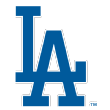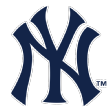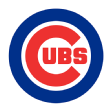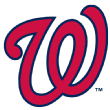Major league general managers are wheeling and dealing with many more trades ahead of them between now and the winter meetings in early December at the Opryland Hotel in Nashville, Tennessee. Here are five trades I’d like to see happen between now and then:
1. Los Angeles Dodgers and Cleveland Indians

 The Dodgers and Indians match up well as trade partners. The Indians desperately need an everyday outfield bat, and the Dodgers need to build the middle of their starting rotation. The only Dodgers outfielders who make sense for the Indians would be Joc Pederson, Scott Van Slyke and Yasiel Puig for financial reasons. The Dodgers are not going to move Pederson, and Van Slyke is not good enough to land Los Angeles one of the Indians’ young starters. The Dodgers do have Andre Ethier and Carl Crawford who can both play the corners, and with so many of Puig’s teammates wanting him traded, it does makes sense for the Dodgers to give up on this uber-talented player if they can get a young, impactful starter back. The Indians could probably deal Trevor Bauer to the Marlins for Marcel Ozuna, but landing Puig would have far more long-term significance despite the higher trade price tag.
The Dodgers and Indians match up well as trade partners. The Indians desperately need an everyday outfield bat, and the Dodgers need to build the middle of their starting rotation. The only Dodgers outfielders who make sense for the Indians would be Joc Pederson, Scott Van Slyke and Yasiel Puig for financial reasons. The Dodgers are not going to move Pederson, and Van Slyke is not good enough to land Los Angeles one of the Indians’ young starters. The Dodgers do have Andre Ethier and Carl Crawford who can both play the corners, and with so many of Puig’s teammates wanting him traded, it does makes sense for the Dodgers to give up on this uber-talented player if they can get a young, impactful starter back. The Indians could probably deal Trevor Bauer to the Marlins for Marcel Ozuna, but landing Puig would have far more long-term significance despite the higher trade price tag.
The Trade:
Indians would get: Yasiel Puig
Dodgers would get: Carlos Carrasco
Why it works:
Dodgers’ side: Los Angeles would get its No. 3 starter in 14-game-winner Carlos Carrasco, who is starting to figure it out and could still develop into a top-of-rotation starter with the elite stuff he has in his arsenal. Carrasco, 28, is in his prime and is signed to a club-friendly contract that is team -controllable through 2020.
Indians’ side: The Indians would acquire a long-term, middle-of-the-lineup bat in Puig, who has MVP potential but may or may not ever live up to that potential because of his emotions, passion and tendency to not be able to adjust as quickly as needed. It’s still a smart risk for the Indians because of their dire need to strengthen their lineup with an affordable option.
2. New York Mets and Colorado Rockies

 The Mets need to improve the middle of their lineup with both Yoenis Cespedes and Daniel Murphy free agents. The Rockies are in a complete rebuilding mode and need to continue emphasizing acquiring young starting pitching in all deals.
The Mets need to improve the middle of their lineup with both Yoenis Cespedes and Daniel Murphy free agents. The Rockies are in a complete rebuilding mode and need to continue emphasizing acquiring young starting pitching in all deals.
The Trade:
Mets would get: Carlos Gonzalez
Rockies would get: Zach Wheeler and Brandon Nimmo.
Why it works:
Mets’ side: If the Mets were willing to include Wheeler in the Carlos Gomez trade, then for sure they would include him for Gonzalez. Gonzalez can play all three outfield positions, and his 40-home run power is needed to replace free-agent Yoenis Cespedes. The Mets would control Gonzalez for two more years at a total of $37 million dollars, which fits their budget much better than if they signed any of the top free-agent outfielders such as Cespedes, Justin Upton or Jason Heyward.
Rockies’ side: The Rockies would get a top-of-the-rotation starter who profiles as the type of pitcher who could succeed at Coors Field. Nimmo has yet to live up to his potential, but he is a high on-base percentage player and his below-average power could improve in the mountain-high air and with more experience. The deal also frees ups $37 million to spend elsewhere.
3. Chicago Cubs and New York Yankees

 The Cubs need to solve center field with both Dexter Fowler and Austin Jackson now free agents and Alberto Almora not yet major league ready. The Yankees need to get more right-handed in their lineup and could use an upgrade at second base.
The Cubs need to solve center field with both Dexter Fowler and Austin Jackson now free agents and Alberto Almora not yet major league ready. The Yankees need to get more right-handed in their lineup and could use an upgrade at second base.
The Trade:
Cubs would get Brett Gardner
Yankees would get Starlin Castro
Why it works:
Cubs’ side: Gardner would give the Cubs the leadoff hitter and center fielder they need to replace Dexter Fowler. Gardner, 31, is a .340 on-base percentage player capable of stealing 25-30 bases. He’s an above-average defender in center, and his left-handed bat is needed in the lineup to keep a solid balance of lefties and righties. His hard-nosed approach would also fit nicely in the Cubs’ clubhouse.
Yankees’ side: The only way this deal works on the Yankees’ side is if they then turn around and sign free-agent outfielder Justin Upton to play left field. Upton would give the Yankees the middle-of-the-order, right-handed bat they are looking for while Castro would improve their offense at the second-base position. Castro should be a .330 on-base percentage batter with 11-14 home run power.
4. Cincinnati Reds and Washington Nationals

 Cincinnati is going to trade Aroldis Chapman this offseason, and the Nationals are one of several teams that match up well with the Reds. The Reds have needs at several positions, and because the Nationals have so much depth in the middle infield, outfield and the back of the bullpen, there are several packages that could work for both teams.
Cincinnati is going to trade Aroldis Chapman this offseason, and the Nationals are one of several teams that match up well with the Reds. The Reds have needs at several positions, and because the Nationals have so much depth in the middle infield, outfield and the back of the bullpen, there are several packages that could work for both teams.
The Trade:
Reds would get: Drew Storen, Michael Taylor, Wilmer Difo
Nationals would get: Aroldis Chapman
Why it works:
Reds’ side: Chapman is a free agent after next season, and they have no plans of signing him to a contract extension. In Storen, they get a closer who was actually one of the National League’s best during the first half of last season but also is a free agent at season’s end. Storen, however, could be dealt at the July trade deadline to land more prospects. Taylor can play all three outfield positions and should be a 20-home run, 20-stolen base player but needs to improve his on-base percentage. Difo, 23, would be the real sleeper in this trade, as he profiles to be a .350 OBP hitter with 15-homer and 30-stolen base potential. Storen would give the Reds a short-term piece, while Taylor and Difo would give them the longer-term play.
Nationals’ side: The Nationals would get the most dominant left-handed reliever in the game to pair with right-hander Jonathan Papelbon at the back end of their bullpen. He improves their chances of winning the World Series next season dramatically, and the Nationals also have the financial wherewithal to extend Chapman with a longer-term contract extension if they so desire. A Chapman-Papelbon pairing would be comparable to the Yankees’ Dellin Betances-Andrew Miller combo and the Royals’ Wade Davis-Kelvin Herrera combo. Having that impact left-hander in the back end is also important for the postseason with so many elite left-handed hitters on contending teams.
5. San Diego Padres and Chicago Cubs

 The Cubs would like to trade for young, controllable starting pitchers and they match up well with the Padres because they are looking for an inexpensive middle-of-the-order corner outfielder that’s capable of replacing the production they’re losing from free-agent Justin Upton.
The Cubs would like to trade for young, controllable starting pitchers and they match up well with the Padres because they are looking for an inexpensive middle-of-the-order corner outfielder that’s capable of replacing the production they’re losing from free-agent Justin Upton.
The Trade:
Padres would get: Jorge Soler and C.J. Edwards
Cubs would get: Tyson Ross
Why it works:
Padres’ side: Soler’s value is low, based on a somewhat disappointing rookie season which produced a slashline of .262/.324/.399 with 18 doubles, 10 home runs and 47 runs batted in. However, most scouts think Soler will develop into a .340 on-base percentage hitter with 25-home run power, and the best part for the Padres is that he’s signed through 2020 at just $30 million. C.J. Edwards was converted from a starter to a reliever last year, but some scouts still think he can be a double-digit wins, back-of-rotation starter who could replace Ross in the Padres’ rotation.
Cubs’ side: The Cubs would get their No. 3 starter to put behind Jake Arrieta and Jon Lester, and they would control Ross for two more years. Ross is entering his prime years, and with some control and command adjustments, still has some room to develop into a perennial 15-game-winner and sub-3.00 ERA starter. The Cubs could then keep Castro at second base, move Javier Baez to third base and put Kris Bryant in right field with Kyle Schwarber in left field.
